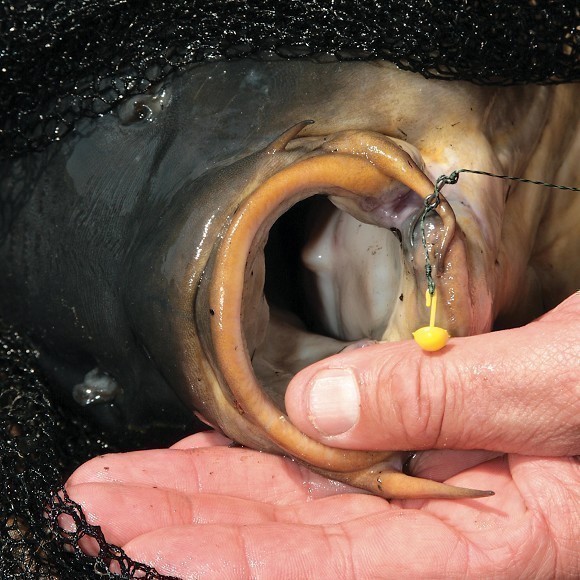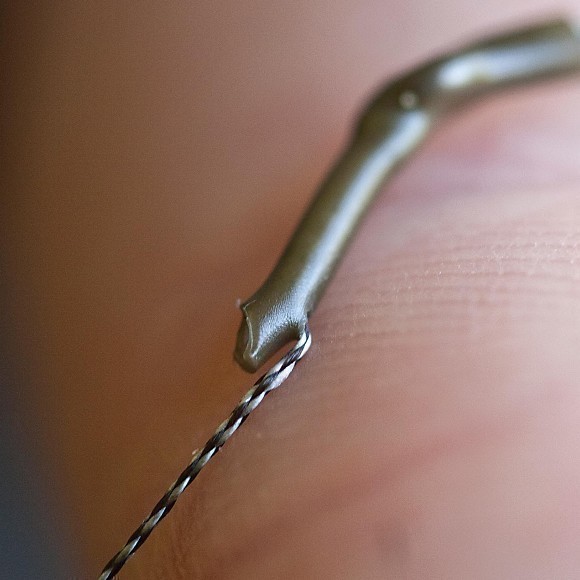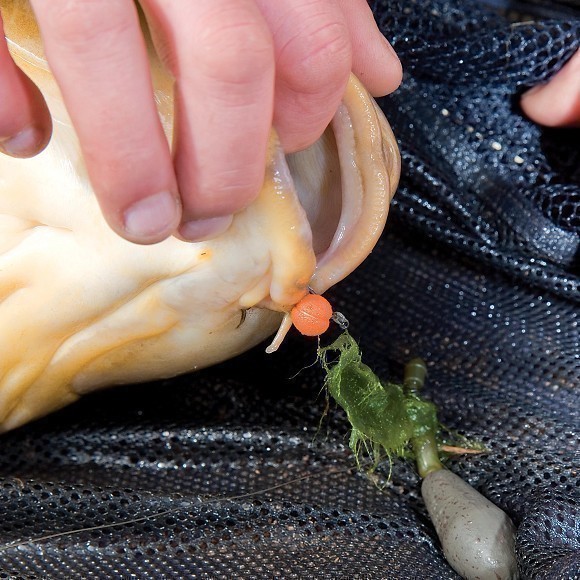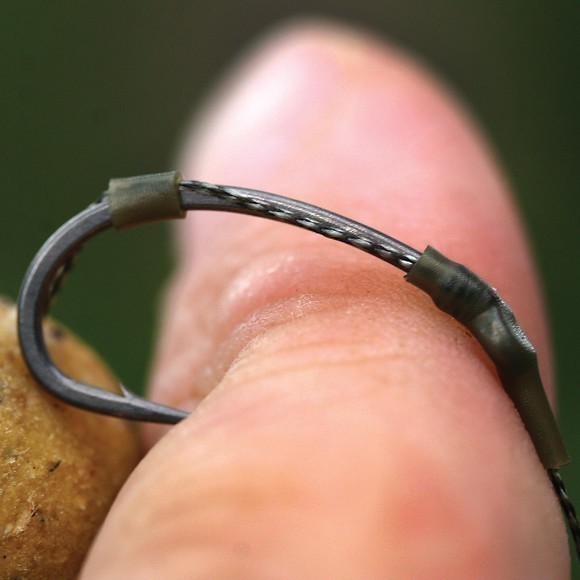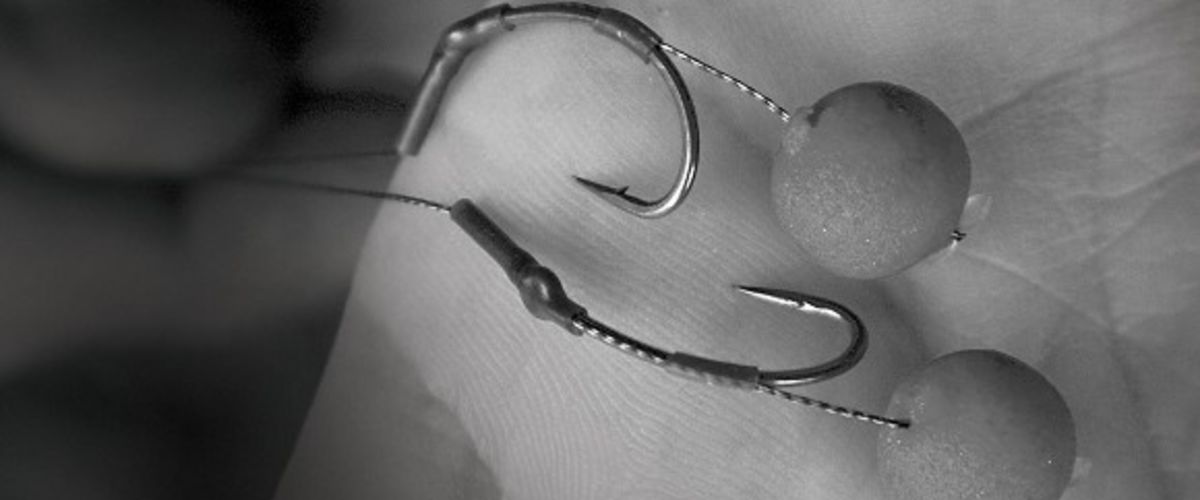
Is the Palm Test any good?
A helpful aid in determining rig mechanics or an irrelevant exercise? Jason Hayward investigates...
Whenever rig mechanics are discussed, one aspect of the subject that always crops up is that of the “palm test”. Most carp anglers will instantly know what I’m talking about: to test the ability of a rig, once it has been sucked up into the carp’s mouth, to flip and turn the hook point to a downwards position to give the rig its maximum potential to prick/hook the carp not only very effectively but securely in the bottom part of the lip.
So does this happen or is it just another fictional myth that gets banded around the carp fishing grapevine as a ‘buzzword’ that everyone starts to drop in to conversation and sounds really good but doesn’t, in reality, have any basis in an angling situation?
The flip and turn phenomenon
The first time this “flip and turn” phenomenon came to the great carp fishing public’s attention was when Rob Maylin first published the ‘bent hook rig’ in his terrific book, Fox Pool way back in the late 1980’s. This rig, which was originally invented a few years before by the great Jon Holt, had been specifically designed to counteract the way the carp that resided in the legendary Longfield Fishery had started to feed on angler’s bait. The very clued up fish, in what was generally regarded at the time as one of the hardest waters in the country, had started to gently suck in the baits and would then very slowly and gently back away, almost as if they were feeling for resistance. Jon had thought about the problem and came up with the very clever solution of putting a downward bend just over halfway down the shank of a long shank hook. This simple idea solved the problem to a certain extent and a good number of carp were caught on the rig.
After the set-up was published, it was of course taken to almost every carp water in the land, by almost everyone, as it was presumed, albeit as we now know wrongly, that if it caught the fish from somewhere as hard as Longfield, it would be like taking candy from a child on other waters and everyone would catch twice the amount on those “easier” fisheries!
The rig did of course catch from everywhere, but not because the carp were feeding like the way they did in Longfield, but just because the rig had so many plus points going for it and it was, at the end of the day, just a very, very effective rig!
However, just to complete the story, as I’m sure many of you know because it got used everywhere, that was its downfall!
The rig was never meant to be used on waters where there were lots of smaller carp that thrashed around all over the shop, and combined with the sudden surge of new, inexperienced anglers at that time, it just compounded the rig’s notoriety of causing mouth damage, which (wrongly in my opinion) led to the rig being banned from a large number of waters across the country.
Understanding the issue(s)
The seeds of “flip and turn” was well and truly sown and the “palm test” became THE benchmark on what all rigs were judged upon for many years – even to this day. But does the palm test theory have any relevance or is it all nonsense? I’ll give you my views, but as with most aspects of rig design and mechanics, when confronted with a problem (not catching), the issue can only be solved if you know what is actually the problem or what is happening out in the lake. If you haven’t physically seen the carp feed or behave in a particular manner, then you are just guessing and the issue can only be properly solved by a process of elimination, which can be painfully slow on a hard water and takes great confidence and only comes from years of experience. It is not normally by coincidence or luck that highly successful anglers are successful!
Lets discuss the pros and cons
There can be no doubting that the action of a hook flipping over to its most potent or, as it is sometimes put, most aggressive (I hate that term) position can help the angler catch more fish. Too many highly successful rigs these days actually keep
the hook in that particular position for it to be just coincidence. Indeed, just a simple pop-up rig will always end up with the hook point downwards, just like we are trying to replicate with the ‘palm test’ but does this action actually happen within the confines of a carp’s mouth? Well, taken just completely at face value, how many carp suck in a bait and slowly move backwards whilst holding the bait in its mouth? For me, if I’m honest, not very many at all! So does that mean its invalid as a test? No!
Sorry, I know I’m going round in circles here and contradicting what I have written above, but bear with me and read on.
The reason that the ‘palm test’ is still very valid for me is the fact that it shows what happens to the rig once it has been sucked in and MOVEMENT occurs – and that movement can be in ANY direction to facilitate the rig doing its turning action and not just as some anglers who poo, poo the idea imagine as a slow gentle pull.
This can be any movement the carp makes after it has sucked the bait in, from simply moving on to the next bait or sifting food along the bottom, to righting itself upright or indeed even shaking its head from side to side as it feels the hook ‘prick’ – all these actions will cause the hooklink to tighten and the hook to turn.
This also leads to the angler to think about his/her baiting situation much more as well, as there is no point having a rig that relies on such mechanics as flipping, turning etc., when, for example, fishing a large bed of particles as the carp won’t be moving very much between mouthfuls. This just demonstrates the undeniable link between bait and baiting scenarios to rigs and the mechanics of them working efficiently.
The Line-Aligner
After the bent hook rig was banned on 99% of fisheries, it was some years later that carp legend, Jim Gibbinson published the now well-known ‘Line-Aligner’ type arrangement which also caused the hook to turn downwards without the need for long shank hooks. This method was also hailed as somewhat of a revolution in the rig world and overcome the problems of bent hooks.
Baiting Patterns
There is no point having a rig that relies on mechanics as flipping and turning when, for example, you’re fishing a large bed of particles as the carp won’t be moving very far between mouthfuls. This just demonstrates the undeniable link between bait and baiting scenarios to rigs and the mechanics of them working efficiently, so to get the most from your set-ups, think about how you bait your swim.
Adding a twist
For bottom bait presentations, as well as using a little piece of shrink tubing over the hook’s eye or trapping the Hair around the bend of the hook, try to keep the separation between the hook and hookbait fairly long (as long as you feel you can), as the boilie can often impede the hook turning if the Hair is too short. Always try to incorporate the turning/flipping effect into your rigs…
Adding some movement
When the evidence is scrutinised, it really is hard to put a case for not trying to incorporate some rig components to facilitate the rig turning.
So are there any negatives? Well, in all honesty, yes, if they can be seen as negatives that is. The first one is that in order for the rig to turn easily, the material used for the hooklink has to be relatively supple, not completely as mono and fluorocarbons can be used, but the best ones are the most supple because as soon as you start adding stiffness, the hook will not turn as easily (I’m talking bottom bait rigs here, not pop-up or Chods), so is this an issue?
Well, I much prefer a stiffer hooklink as carp find them much harder to deal with and eject, and any rig that is harder to eject will be in the mouth for longer, and even if that’s just a fraction of a second, it will therefore have a greater chance of catching hold. Incorporating a stiff hooklink and a hook that turns can be achieved but took me a long time to make it as effective as I wanted so I’m not giving anything away here, but what I will say is that most modern-day rigs rely on some sort of movement to be effective. Whether that be physical movement from the carp causing the hooklink to straighten or movement from the rig, as in pricking the fish when the rig moves out as it’s ejected. If you can design your rig to catch hold or prick the carp when your hookbait is sucked in the mouth, without any movement at all, you’ll be on to a rig to that will out-fish everything you’ve used before!
For bottom baits, as well as using a little bit of shrink tubing over the eye or trapping the Hair around the bend of the hook, try to keep the separation between the hook and hookbait fairly long (as long as you feel you can), as the boilie can often impede the hook turning if the Hair is too short or non-existent.
At the end of the day, what really happens to a baited rig inside a carp’s mouth will always be conjecture, but the majority of carp hooked these days is done so in the bottom half of the mouth which does indicate that the rigs we are using are working to some extent how we imagine them to be. So I look at it this way: when I’m playing about with rigs, where possible, I try to incorporate the turning/flipping effect into them because I see the concept working far more in my favour than against.
Jason Hayward





